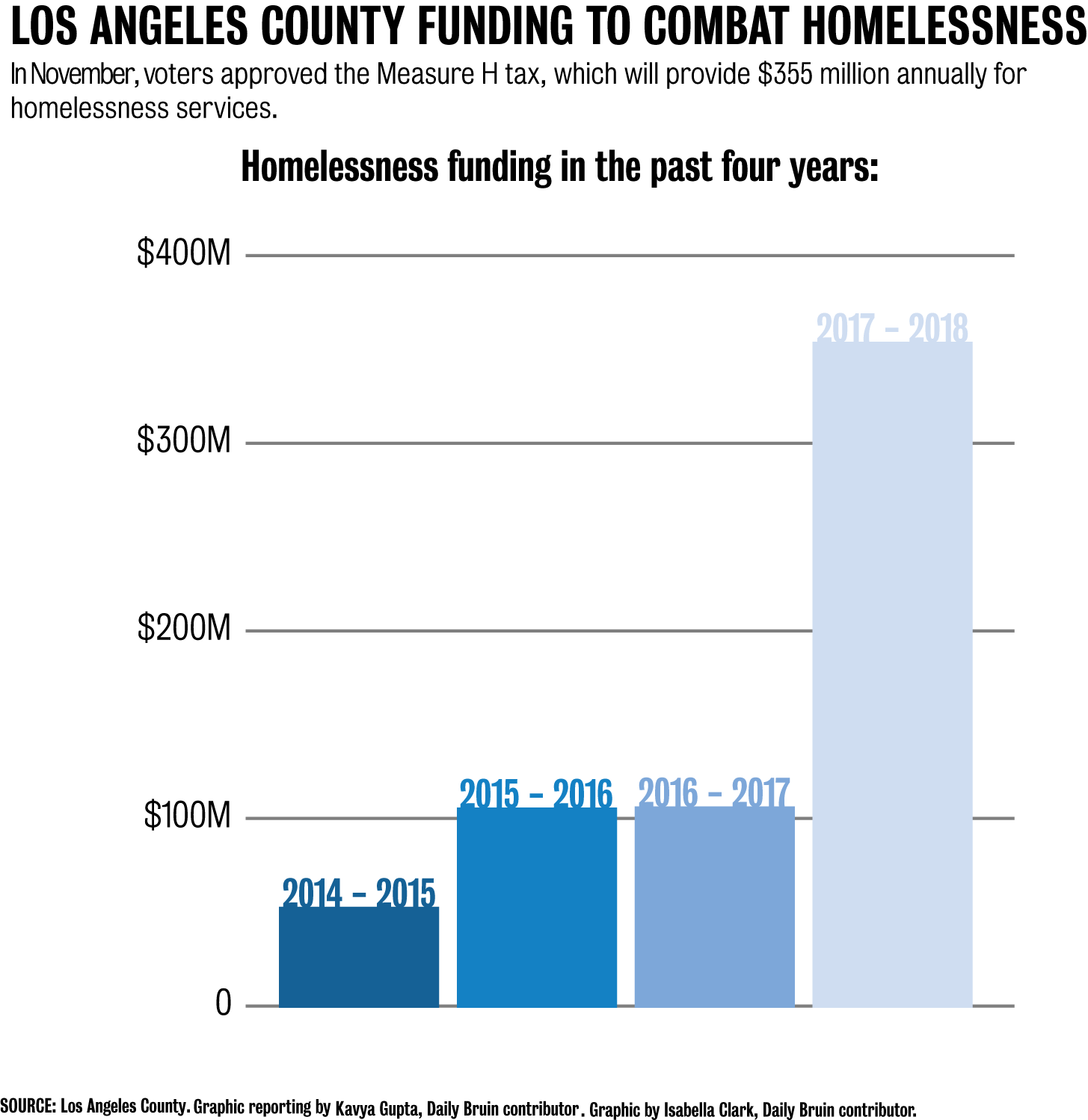Community experts debate county’s proposals for reducing homelessness

By Kavya Gupta
May 4, 2017 12:12 a.m.
UCLA experts and community leaders have opposing views on the effectiveness of strategies Los Angeles County is considering to combat homelessness.
The county is discussing Thursday its 2017-2018 budget proposal and how it will allocate revenue from Measure H, a measure that implemented a .25 percent sales tax to fund homeless services.
The budget proposal aims to assist 45,000 families and individuals who are homeless and another 30,000 who are at risk of being homeless. The city created the Measure H Revenue Planning Process Work Group to decide how the measure’s funding will be distributed among the budget’s different proposed strategies, said Phil Ansell, director of the county’s Office of Homeless Initiative.
In two previous meetings, the group only reached consensus on a couple of strategies, according to the Los Angeles Times. In the third meeting, they discussed how to allocate $340 million over three years for rapid rehousing and $290 million for shelters, but did not reach a conclusion.
Gary Blasi, professor emeritus at the UCLA School of Law, said rapid rehousing programs aim to connect people who are newly homeless, usually because of an eviction, to housing as soon as possible. The programs also supplement individuals’ resources, such as food, shelter and clothing.
Andrew Thomas, executive director of the Westwood Village Improvement Association, said he thinks rapid rehousing programs would help address homelessness in Westwood because many individuals in the area have only recently become homeless and might remain homeless for just a few months.
“If we can keep these people off the streets, our numbers would go down significantly,” Thomas said.
However, Blasi added he thinks rapid rehousing is not effective in housing chronically homeless people.
“The programs assume people have resources and will have enough to pay rent when the assistance ends, typically after a few months,” Blasi said. “They provide some help, but their effectiveness is limited by the extreme shortage of housing for the very poor, whose number continues to grow.”
Thomas said he thinks providing rapid rehousing to individuals who have recently become homeless would open up space and resources to address chronic homelessness.
The budget also proposed $13 million for interim/bridge housing, or housing that would be provided for homeless individuals until they find permanent housing, for those exiting institutions.
Blasi said he thinks bridge housing will help individuals experiencing temporary homelessness, but permanent housing must be built to help chronically homeless individuals.
In November 2016, Los Angeles city voters passed Measure HHH, which would fund affordable and permanent housing for homeless individuals through $1.2 billion in bonds over 10 years. However, the housing would take two to three years to build, and the city’s homeless population is increasing and would continue to increase in that time, Blasi said.
Zev Yaroslavsky, director of the Los Angeles Initiative at the UCLA Luskin School of Public Affairs said he thinks cities should provide homeless individuals with permanent housing through programs like Measure HHH.
Yaroslavsky also said cities like San Francisco, Houston, New York and San Diego, which have decreased homelessness rates, have embraced the concept of housing first.
“What has failed is taking people off the streets, giving them temporary shelters,” he said. “In housing first, people are given permanent housing and then address the issues that put them on the streets in the first place.”
The LA County budget proposal also plans to allocate $56 million to enhance the county’s emergency shelter system.
Thomas said he thinks the lack of shelter beds for the homeless is a major problem on the Westside of Los Angeles, including Westwood.
“If there are beds for people, they have the opportunity to seek shelter to other services,” he said. “Through the emergency shelter system, the homeless can be connected to services such as temporary housing that would then lead to permanent housing, to medical attention, to treating substance abuse.”
However, Blasi said he thinks the county’s proposed strategies of improving rapid rehousing, interim/bridge housing and others are only temporary solutions. He said these plans do not address the underlying economic or social factors that cause homelessness, such as mental health issues or substance addictions.
Blasi also said he thinks reductions in federal funding from President Donald Trump’s administration may hinder the effectiveness of the measures.
“These interventions do not address the need of chronically homeless people for supportive housing,” Blasi said. “I would not expect them to have much impact on the visible problem of homelessness in Westwood.”

